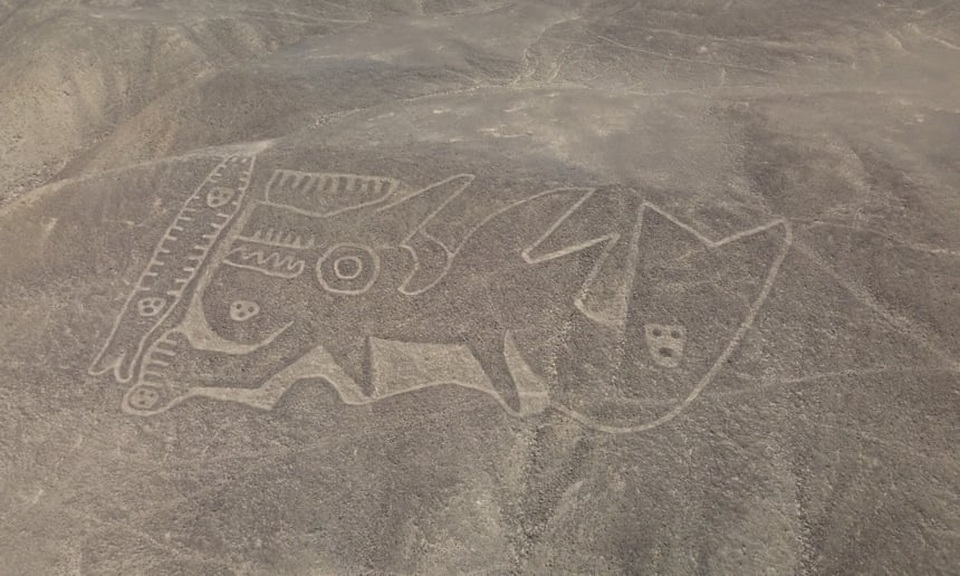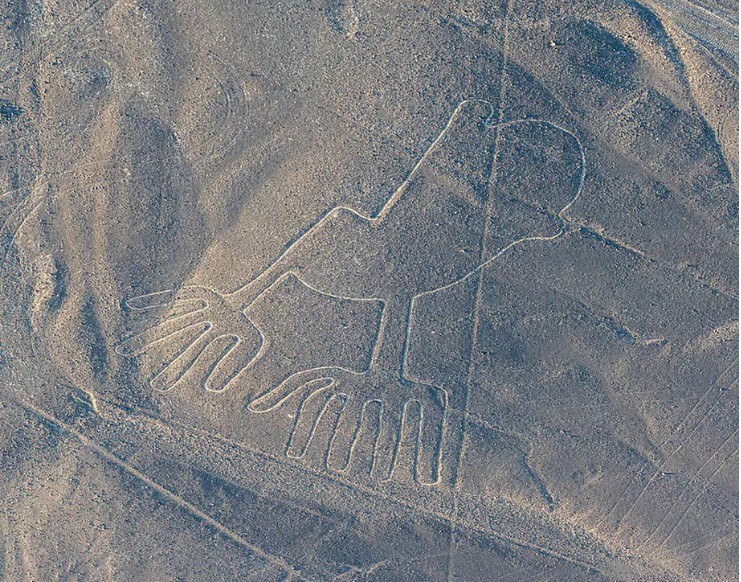Hidden in the arid Palpa Valley of Peru, the Palpa geoglyphs are a breathtaking testament to the ingenuity and mystery of ancient civilizations. These massive designs, dating from around 500 BC to 500 AD, were carved into the desert floor by the Paracas and Nazca cultures, centuries before the famous Nazca Lines were created. While the Nazca Lines often capture the spotlight, the Palpa geoglyphs hold unique insights of their own, providing a fascinating yet elusive glimpse into the beliefs and practices of early Andean societies.
Table of Contents
ToggleDiscovery and Preservation
The Palpa geoglyphs span a large area in the Peruvian desert, showcasing intricate designs that include representations of animals, plants, humans, and abstract geometric shapes. These geoglyphs first gained broader attention during modern aerial surveys in the 20th century, as their large scale made them nearly invisible from the ground. While the Nazca Lines have been extensively studied, the Palpa geoglyphs remain somewhat lesser-known, contributing to their enigmatic appeal.
In recent years, preservation efforts have increased due to threats from erosion, environmental changes, and human activity. Both the Palpa and Nazca geoglyphs are now protected as UNESCO World Heritage sites, underscoring their cultural and historical significance.

Artistic Features and Cultural Significance
The designs of the Palpa geoglyphs offer a unique artistic style, with intricate motifs not seen in the Nazca Lines. Figures include birds, serpents, felines, and plants, which might have held specific cultural or symbolic meanings. Unlike the Nazca Lines, which are predominantly geometric and linear, the Palpa geoglyphs include more anthropomorphic (human-like) figures and elaborate detailing, suggesting that they might have served a different or complementary purpose.
Scholars believe that these designs were created using simple yet effective tools. By removing the dark upper layer of soil to reveal the lighter ground beneath, the Paracas and Nazca artists achieved high contrast designs that have survived the centuries.

Theories on the Purpose of the Palpa Geoglyphs
The purpose behind these grand creations remains one of archaeology’s enduring mysteries. Researchers propose a range of theories, each reflecting different aspects of ancient Andean life.
- Religious and Ceremonial Use: Some believe that the geoglyphs served as places for religious or ceremonial gatherings. The large scale and high visibility of these designs might have made them ideal for processions or rituals conducted in honor of deities. Certain figures, like those resembling animals or plants, could have been symbolic representations related to fertility, water, or agriculture—elements crucial to desert communities.
- Astronomical Markers: Another prominent theory suggests that the geoglyphs were used for astronomical purposes, potentially aligning with celestial events. Some of the designs might correspond with solstices or equinoxes, acting as markers to track the seasons. This theory aligns with the significance of astronomy in Andean cultures, where celestial bodies often played roles in agricultural cycles and mythologies.
- Agricultural Significance: Given the challenging environment of the Palpa Valley, some scholars propose that the geoglyphs had agricultural significance. They may have been designed as ritualistic appeals for rain or fertility, symbolizing the community’s dependence on natural resources. This theory posits that the geoglyphs served as both functional and symbolic tools, possibly meant to invoke blessings for bountiful harvests and sustainable resources in a region where water scarcity was a constant challenge.
- Social and Territorial Markers: Another intriguing possibility is that the geoglyphs acted as social or territorial markers, delineating boundaries between different communities or indicating areas of significance within the Paracas and Nazca cultures. The designs could have symbolized identity or ownership, perhaps marking land used for gathering, rituals, or agricultural purposes. This theory adds a social dimension to the geoglyphs, suggesting that they played a role in defining relationships among local communities.
Techniques and Insights from Recent Studies
The Palpa geoglyphs reflect impressive technical skill, especially given the limitations of ancient tools. Recent studies have highlighted the artists’ ability to create massive, precise designs without the aerial perspective we rely on today. Scholars suggest that these ancient artisans may have used simple tools like ropes and stakes to measure and create straight lines, curves, and proportional shapes. Such techniques reveal a sophisticated understanding of geometry and spatial awareness, as well as a deep dedication to preserving cultural and spiritual practices.
Modern technology has greatly advanced our understanding of these geoglyphs. Archaeologists use drones, satellite imaging, and ground-penetrating radar to analyze the structures without damaging the fragile desert surface. This technology has not only helped in documenting known geoglyphs but has also led to the discovery of previously unknown designs, further expanding our understanding of the Palpa and Nazca cultures.

Cultural and Historical Legacy
The Palpa geoglyphs, much like the Nazca Lines, continue to captivate researchers and visitors alike, offering a window into the ancient world. They represent a remarkable cultural legacy, highlighting the ingenuity, creativity, and beliefs of the Paracas and Nazca people. By studying these geoglyphs, we gain insight into the complex ways in which early societies interacted with their environment, expressed their spirituality, and navigated the challenges of their natural world.
Their enduring mystery—why they were made, and what exactly they meant to those who created them—leaves room for wonder and curiosity. The ongoing study and preservation of the Palpa geoglyphs ensure that future generations can continue exploring these questions, piecing together the story of an ancient civilization whose voice echoes through these magnificent designs.
The Palpa geoglyphs, along with the nearby Nazca Lines, remind us of humanity’s timeless desire to leave a mark, to communicate something significant, and to connect with forces greater than ourselves. Whether these designs were messages to the gods, guides for the stars, or symbols of unity among ancient peoples, they remain a profound testament to human creativity and the mysteries of history.

